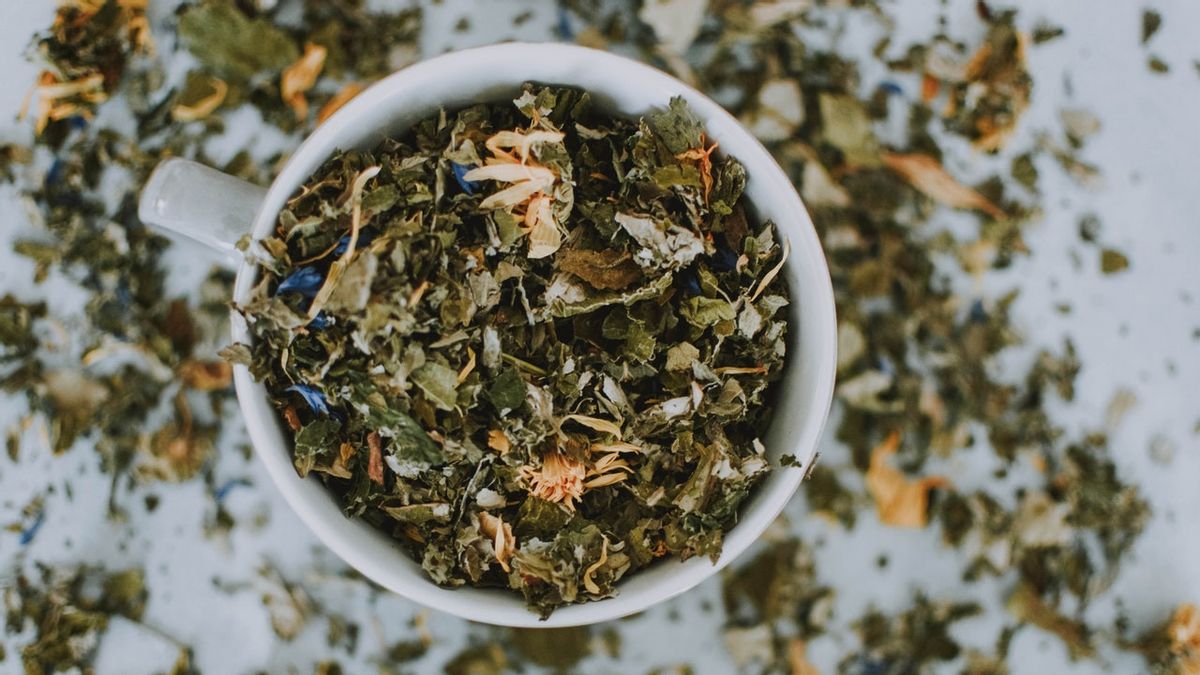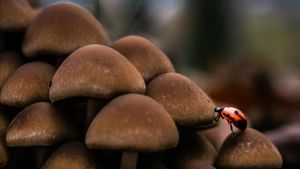JAKARTA - Many people think that mugwort is kenikir. The leaves are similar in shape, but mugwort has the scientific name Artemisia Princeps. Mugwort is a plant that has recently been popular as a skin care ingredient from South Korea.
What exactly is the content in mugwort that is claimed to be safe for sensitive skin?
Initially, mugwort was a weed plant found in areas north of the equator. Over the centuries, mugwort has been used as a food ingredient, in herbal preparations, in traditional medicine and even as a talisman to ward off evil spirits.
In Japan it is known as yomogi and in South Korea it is called ssuk. In traditional medicine practices, mugwort leaves are burned and attached to the body.
The goal is to improve blood circulation. Mugwort is also processed into tisane or soothing herbal drinks.
It seems that there is nothing special about this plant that can grow anywhere. However, since South Korean beauty products use it as a manufacturing ingredient, its name has been on the rise.
The benefits of mugwort for beauty are formulated in one facial care product that helps soothe and treat sensitive skin. In one mugwort stalk contains vitamin E and antioxidants. These two ingredients can nourish, protect, and calm.
Starting from flowers, leaves to roots mugwort has benefits. All of them are processed separately into medicinal powders, tisane, and nutritional creams.
- https://voi.id/lifestyle/31540/berkenalan-dengan-i-azelaic-acid-i-pendatang-baru-dunia-i-skincare-i-yang-efektif-lasi-jerawat
- https://voi.id/lifestyle/31827/cara-memakai-masker-spirulina-yang-tepat-agar-hasil-lebih-maksimal
- https://voi.id/lifestyle/32281/tips-wajah-bebas-jerawat-meski-seharian-memakai-masker-apa-saja
- https://voi.id/lifestyle/32233/tips-dan-benefits-akukan-i-facial-ii-di-rumah-agar-tetap-cantik-kala-pandemi
- https://voi.id/lifestyle/32263/i-sustainable-fashion-i-tren-fesyen-ramah-lingkungan-yang-popul-di-tahun-2021
[/ see_also
South Koreans are not the first to cultivate and use mugwort. Previously, North American natives used mashed mugwort leaves to treat bruises, itching, skin sores, rashes, and eczema.
Based on mythological stories in South Korea, mugwort relates to the founding of the first Korean dynasty, Gojoseon. Quoting from Allure, it is told that a bear and a tiger want to become human, to become Hwanung.
The son of the Ruler of Heaven tested them by being asked to stay in a cave for 100 days and provided them with mugwort leaves and garlic.
Bears survive and are quite full by consuming only mugwort for 21 days. Until the time came, the bear became Hwanung and gave birth to Dangun, the founder of the Gojoseon Dynasty.
Reported by Glam Touch, various scientific studies have proven that mugwort is anti-inflammatory, anti-bacterial and anti-fungal. Of these three properties, mugwort is arguably a multifunctional material.
Mugwort for the face, because it contains vitamin E, is claimed to treat signs of aging on the skin. In addition, the toughness of vitamin E is able to keep the skin moisturised, minimize the effects of sun exposure and tighten the skin.
Have you ever examined the skin care ingredients you use? In fact, mugwort is a historical facial care ingredient.
The English, Chinese, Japanese, Arabic, and French versions are automatically generated by the AI. So there may still be inaccuracies in translating, please always see Indonesian as our main language. (system supported by DigitalSiber.id)











